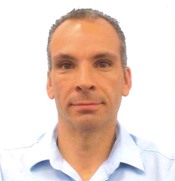Program Information
DBT Physics Basic to Advanced

A Maidment
J Mainprize
W Zhao
I Sechopoulos
A Maidment1*, J Mainprize2*, W Zhao3*, I Sechopoulos4*, (1) University Pennsylvania, Philadelphia, PA, (2) Sunnybrook Health Sciences Centre, North York, ON, (3) SUNY Stony Brook, Stony Brook, NY, (4) Radboud University Medical Centre, Nijmegen, NL
Presentations
1:45 PM : Primer on Tomosynthesis - A Maidment, Presenting Author2:15 PM : Tomosynthesis Reconstruction Methods - J Mainprize, Presenting Author
2:45 PM : Assessing Image Quality - W Zhao, Presenting Author
3:15 PM : Radiation Dosimetry in Breast Tomosynthesis - I Sechopoulos, Presenting Author
MO-DE-209-0 (Monday, August 1, 2016) 1:45 PM - 3:45 PM Room: 209
Digital Breast Tomosynthesis (DBT) is rapidly replacing mammography as the standard of care in breast cancer screening and diagnosis. DBT is a form of computed tomography, in which a limited set of projection images are acquired over a small angular range and reconstructed into tomographic data. The angular range varies from 15° to 50° and the number of projections varies between 9 and 25 projections, as determined by the equipment manufacturer.
It is equally valid to treat DBT as the digital analog of classical tomography – that is, linear tomography. In fact, the name “tomosynthesis” stands for “synthetic tomography.” DBT shares many common features with classical tomography, including the radiographic appearance, dose, and image quality considerations. As such, both the science and practical physics of DBT systems is a hybrid between computed tomography and classical tomographic methods. In this lecture, we will explore the continuum from radiography to computed tomography to illustrate the characteristics of DBT.
This lecture will consist of four presentations that will provide a complete overview of DBT, including a review of the fundamentals of DBT acquisition, a discussion of DBT reconstruction methods, an overview of dosimetry for DBT systems, and summary of the underlying image theory of DBT thereby relating image quality and dose.
Learning Objectives:
1. To understand the fundamental principles behind tomosynthesis image acquisition.
2. To understand the fundamentals of tomosynthesis image reconstruction.
3. To learn the determinants of image quality and dose in DBT, including measurement techniques.
2. To learn the image theory underlying tomosynthesis, and the relationship between dose and image quality.
Funding Support, Disclosures, and Conflict of Interest: ADM is a consultant to, and holds stock in, Real Time Tomography, LLC. ADM receives research support from Hologic Inc., Analogic Inc., and Barco NV. ADM is a member of the Scientific Advisory Board for Gamma Medica Inc.; A. Maidment, Research Support, Hologic, Inc. Research Support, Barco, Inc. Scientific Advisory Board, Gamma Medica, Inc. Scientific Advisory Board, Real-Time Tomography, LLC. Shareholder, Real-Time Tomography, LLC; J. Mainprize, Our lab has a research agreement with GE Healthcare on various topics in digital mammography and digital tomosynthesis; W. Zhao, Research grant from Siemens Health Care
Handouts
- 115-31704-387514-118406.pdf (A Maidment)
- 115-31706-387514-118281.pdf (W Zhao)
Contact Email:




